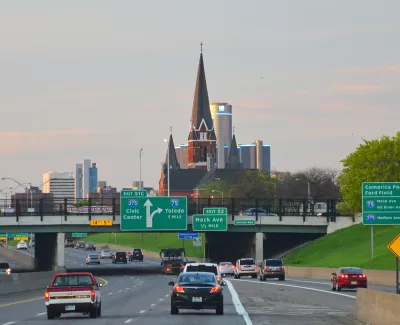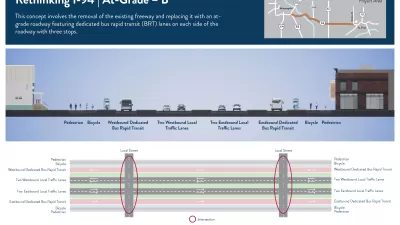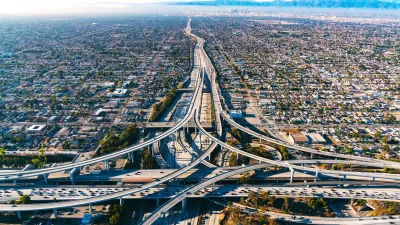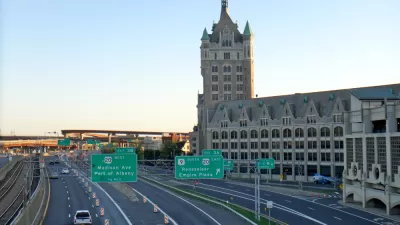A decade-old plan to elevate a below-grade segment of Interstate 375 and replace it with a lower-speed boulevard could begin two years ahead of schedule thanks to USDOT funding.

Detroit’s plan to remove a portion of the I-375 freeway received a boost from the federal government with a $104 million grant from the U.S. Department of Transportation, part of a broader federal endeavor to remedy the impacts of freeways and urban renewal on neighborhoods around the country. Notably, the grant was not awarded from the Reconnecting Communities Act, but from USDOT’s Infrastructure for Rebuilding America program.
According to a Detroit News article by Melissa Nann Burke and Riley Beggin, “The grant is a significant boon for the proposal, which dates to 2013 and envisions a walkable, leafy concourse integrated with the community and lined with shops, restaurants, homes and pedestrians on the eastern of edge of downtown Detroit.”
The effort is expected to cost $300 million and be completed by 2030. “The project, which already has environmental approvals from the Federal Highway Administration, would raise the roadway by 20 feet to street level, integrate it with cross-streets and landscape a boulevard past Jefferson Avenue down to Atwater Street.”
The freeway removal encompasses other projects including traffic calming measures, the removal of fifteen bridges, and new signalized crosswalks and bike lanes.
FULL STORY: Michigan gets $105M grant from feds to turn I-375 in Detroit into boulevard

Alabama: Trump Terminates Settlements for Black Communities Harmed By Raw Sewage
Trump deemed the landmark civil rights agreement “illegal DEI and environmental justice policy.”

Planetizen Federal Action Tracker
A weekly monitor of how Trump’s orders and actions are impacting planners and planning in America.

The 120 Year Old Tiny Home Villages That Sheltered San Francisco’s Earthquake Refugees
More than a century ago, San Francisco mobilized to house thousands of residents displaced by the 1906 earthquake. Could their strategy offer a model for the present?

In Both Crashes and Crime, Public Transportation is Far Safer than Driving
Contrary to popular assumptions, public transportation has far lower crash and crime rates than automobile travel. For safer communities, improve and encourage transit travel.

Report: Zoning Reforms Should Complement Nashville’s Ambitious Transit Plan
Without reform, restrictive zoning codes will limit the impact of the city’s planned transit expansion and could exclude some of the residents who depend on transit the most.

Judge Orders Release of Frozen IRA, IIJA Funding
The decision is a victory for environmental groups who charged that freezing funds for critical infrastructure and disaster response programs caused “real and irreparable harm” to communities.
Urban Design for Planners 1: Software Tools
This six-course series explores essential urban design concepts using open source software and equips planners with the tools they need to participate fully in the urban design process.
Planning for Universal Design
Learn the tools for implementing Universal Design in planning regulations.
Clanton & Associates, Inc.
Jessamine County Fiscal Court
Institute for Housing and Urban Development Studies (IHS)
City of Grandview
Harvard GSD Executive Education
Toledo-Lucas County Plan Commissions
Salt Lake City
NYU Wagner Graduate School of Public Service





























